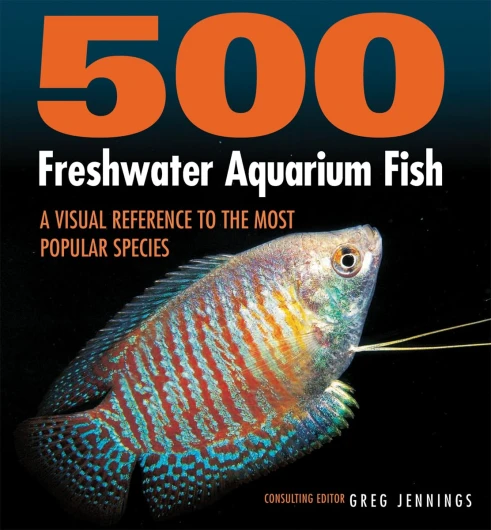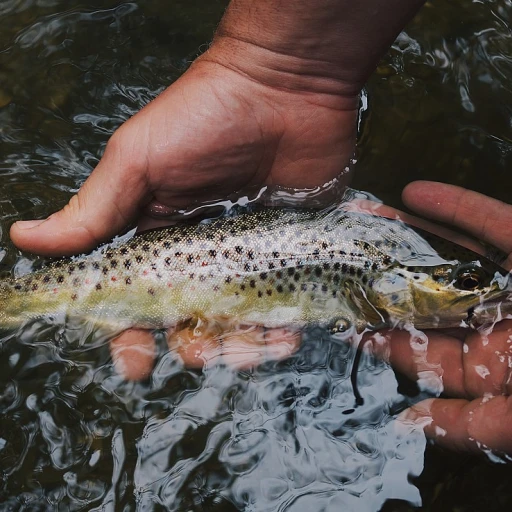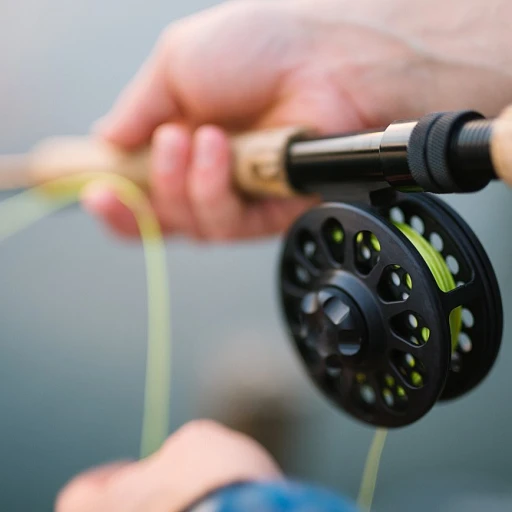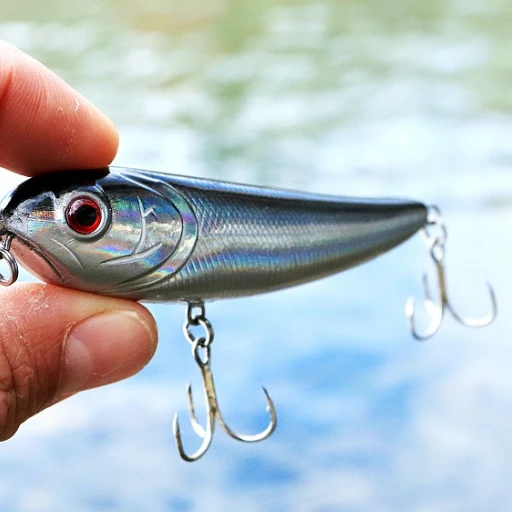
The basics of fish reproduction
Fish spawning simplified
When people think about fish, often the first question they ask isn’t “Do fish have sex?” But it’s a valid question considering the wild diversity of reproduction strategies occurring underwater. Across the more than 33,000 identified fish species, reproduction can vary significantly.
Unlike humans or many other animals, fish don’t always engage in direct mating. Instead, many fish reproduce via spawning. In this process, female fish release their eggs into the water, and males follow by releasing sperm to fertilize these eggs. This can result in thousands of offspring from a single event.
For instance, Salmon (Salmo salar) and Cod (Gadus morhua) are known for producing large quantities of eggs, sometimes in the millions, which increases their chances of survival despite high predation rates. According to a study in the Journal of Fish Biology, Atlantic cod releases around 5 million eggs during a spawning season. This helps ensure that at least some will survive to adulthood.
Diverse methods of fish reproduction
Apart from the common method of external fertilization, some fish engage in internal fertilization. In species like the guppy (Poecilia reticulata) and some sharks, males use specialized fins or structures to transfer sperm directly into the female’s reproductive tract. Research from the Comparative Biochemistry and Physiology highlights that live-bearing fish like guppies give birth to fully formed, free-swimming young.
Moreover, some fascinating species use unique strategies. For example, the seahorse (Hippocampus) males carry fertilized eggs in a specialized pouch, where they develop until hatching, essentially being the 'pregnant' parent.
These variations in reproductive methods ensure that fish can adapt to different environmental conditions and increase their population’s chances of survival.
Strategic spawning times and locations
Timing and environment matter a lot in fish reproduction. Many species time their spawning activities to coincide with specific environmental cues like temperature changes, moon phases, or food availability. For example, coral reef fishes like the grouper (Epinephelus spp.) spawn during full moons, as this timing helps maximize the survival rate of their offspring according to the Nature Reviews Immunology.
The careful selection of spawning sites is another strategy. Some fish travel long distances to lay their eggs in safe, predator-free environments. Salmon are famous for their grueling upstream journey to lay eggs in fresh water – a challenging yet vital trek.
This section barely scratches the surface of fish reproductive strategies. Future sections will delve deeper into how environmental and social factors, along with unique changes in fish sex, play critical roles in these processes.
Understanding sexual differentiation in fish
Sexual differentiation mechanisms in fish
Understanding sexual differentiation in fish is complex but fascinating. Unlike mammals where sex is determined at fertilization by specific chromosomes, fish exhibit a wide variety of sex determination systems. According to a study by the National Institutes of Health (NIH), these systems can broadly be classified into genetic sex determination (GSD) and environmental sex determination (ESD).
Genetic sex determination involves specific genes. For example, the medaka fish (Oryzias latipes) reveals sex chromosomes that closely resemble those of mammals. However, more frequently fish have multifactorial systems governing sex, involving multiple genes or interactions between genes and other environmental factors.
In contrast, environmental sex determination relies on environmental cues like temperature or social factors. Research published in Proc Natl Acad Sci (PNAS) shows species like the Atlantic silverside (Menidia menidia) exhibit temperature-dependent sex determination, where cooler temperatures skew populations toward more females and warmer temperatures favor males.
Moreover, several species show an incredible degree of plasticity in their sex determination pathways. For instance, many coral reef fish like the bluehead wrasse (Thalassoma bifasciatum) don't settle into one sex for life. This species starts life as females, and some individuals later transform into males—a phenomenon known as sequential hermaphroditism. According to a report from the NIH, about 2% of teleost fish species are capable of such sex change.
Fascinatingly, these changes often coincide with social hierarchies and behaviors. Research by Dr. Ronald L. Earley highlights how social cues, like the removal or absence of a dominant male, can trigger a subordinate female to switch sex. This can be observed in cichlid fish and other socially complex species.
In these instances, sex determination isn't a one-time, rigid decision. It's a fluid process, heavily influenced by interactions within the species and the environment. Consequently, understanding sexual differentiation in fish offers a vivid example of nature’s adaptability and complexity.
The phenomenon of sex change in fish
The phenomenon of changing sexes
Did you know that some fish species can change sex during their lifetime? This fascinating process, known as sequential hermaphroditism, is not only a scientific marvel but also a survival strategy in many fish species.
In this intriguing reproductive adaptation, a fish starts its life as one sex and transitions to another. There are two main types of sex changes in fish: protogynous and protandrous. Protogynous hermaphrodites, like the bluehead wrasse and the black porgy Acanthopagrus schlegeli, start their lives as females and later transform into males. On the flip side, protandrous species like the clownfish begin as males and later become females.
This transition is often influenced by the fish's social environment. For instance, in a school of fish, the largest female may change to a male if the dominant male is removed. This ensures that the reproductive role is filled, supporting the group's breeding success. Renowned researchers like Earlly RL and Shapiro DY have extensively studied these behavioral triggers and their outcomes.
Physiological and genetic mechanisms
The process of changing sex in fish involves complex physiological and genetic changes. Specific genes and environmental cues trigger these transformations. Sex-determining genes play a pivotal role in this process, working in tandem with environmental factors like temperature and social interactions.
Studies published in journals such as Nat Rev Genet and Proc Natl Acad Sci (PNAS) provide insights into how these genetic and environmental factors interplay to drive sex reversal. For example, in coral reef fishes, environmental factors such as the sex ratio within a group and social dominance dynamics can significantly influence sex change.
Real world example: the bluehead wrasse
Let's take a closer look at the bluehead wrasse (Thalassoma bifasciatum). This small, colorful reef fish is a classic example of a protogynous hermaphrodite. In a social group of bluehead wrasse, one dominant male maintains a harem of females. If this male is removed, the largest female in the group will undergo a rapid sex change, transforming into a male within days to take over the harem. This highlights a remarkable aspect of fish reproductive strategies, where social structure and environmental cues directly influence sex determination and reproductive roles.
This remarkable ability to switch sex is not only a captivating aspect of marine biology but also a critical survival mechanism, ensuring that fish populations adapt and thrive in their dynamic environments. Dr. Russel L. Fernald, a leading expert in fish neuroscience and behavior, has famously stated, "Fish demonstrate a wide array of reproductive strategies that are as varied as they are fascinating. Sequential hermaphroditism is one of the most intriguing, showing how adaptable and resilient these creatures can be."
Next, let's delve deeper into how environmental factors further influence these amazing transformations in fish.
Environmental influences on fish sex determination
How environmental factors shape sex determination in fish
Fish sex determination isn't just a matter of genetics. Environmental factors play a significant role in influencing whether a fish develops as a male or a female. Factors like temperature, water pH, and even population density can all play a part in this complex process.
One of the most well-documented examples is the Atlantic silverside (Menidia menidia). Research has shown that the temperature at which eggs are incubated can skew the sex ratio. Warmer waters tend to produce more males, while cooler waters result in more females (Conover & Heins, 1987, PNAS). This phenomenon is known as temperature-dependent sex determination (TSD).
In addition to temperature, pH levels and chemical pollutants in the water can also affect sex ratios. Studies on black porgy (Acanthopagrus schlegeli) revealed that higher acidity levels could lead to a higher proportion of males (Munday et al., 2006, Natl Acad Sci).
How external limits fish sex change
Environmental cues aren't only crucial for initial sex determination; they also impact sex change in sequential hermaphrodites. For instance, fish species that change sex, like the bluehead wrasse (Thalassoma bifasciatum), experience these changes based on social factors (Warner & Swearer, 1991, PNAS). In a population where large males are scarce, the largest female will switch to male to ensure reproductive success.
These environmental and social cues ensure that the reproductive needs of the population are met, demonstrating the incredible adaptability of fish. Fish like the African cichlid fish (Teleostei) show that these changes can be dynamic, based on the surrounding conditions.
Research on environmental influences
Recent studies continue to explore the genetic and environmental interplay. Researchers at the National Institutes of Health highlight that fish possess genes sensitive to these factors, leading to diverse reproductive strategies (Fernald, 2002, Nat Rev Genet). In fact, Earley RL's work has shown that hormonal responses activated by environmental stimuli can drive these changes, further highlighting the complexity of fish reproductive biology (Earley et al., 2006, PNAS).
The role of social behavior in fish sex change
Social dynamics and their influence on sex change in fish
When it comes to fish, social behavior is not just an interesting side note; it’s pivotal to their very existence. Many fish species exhibit unique social structures that directly impact their reproductive strategies and, more intriguingly, their sex change processes.
For instance, in the hierarchies of some reef fishes, like the bluehead wrasse, social structure plays a crucial role in determining which individuals change sex. Within these societies, the largest female in the group can change sex to become a male if the dominant male is removed. This shift is driven by social cues that cause biological changes, transforming reproductive organs and altering the individual's social status within the group.
Studies (Shapiro DY et al., 2002, PNAS) have shown that this type of social behavior is not random but influenced by environmental cues and internal hormonal changes. When the alpha male disappears, hormonal signals prompt the largest female to undergo a sex change, shifting from producing eggs to generating sperm. This phenomenon ensures reproductive continuity and survival of the group.
Case study: social behavior in the bluehead wrasse
The bluehead wrasse (Thalassoma bifasciatum) is a textbook example of how social structures impact sex change in fish. Research by Earley RL and colleagues have delved into how social dynamics trigger sex reversal in this species.
The α-male bluehead wrasse guards a harem of females and maintains this hierarchy through aggressive behaviors. When this dominant male is removed, the largest female in the social group undergoes sex reversal, driven by endocrine changes. Within days, her reproductive organs transition from female to male, and she assumes the new social role of α-male.
What’s fascinating is that this change isn’t merely a mechanical response to the absence of the dominant male but is deeply rooted in complex social interactions. Research indicates that social stress, environmental cues, and even genetic factors play significant roles in these changes.
Genetic and hormonal influences
Research insights from the National Institutes of Health (NIH) and other bodies suggest that sex determination and change in fish are governed by a cocktail of genetic and hormonal influences. Specific genes, such as those involved in the production and regulation of reproductive hormones, play critical roles. For example, the gene cyp19a1a, which is involved in estrogen production, can impact whether a fish develops as male or female. These insights offer a deeper understanding of fish sexual differentiation and sex change mechanisms.
Research debates
The study of social behavior in fish sex change is not without controversy. Some researchers argue about the primary triggers—whether they are more socially or environmentally driven. While there’s consensus on the role of social hierarchies, debates persist on the relative influence of environmental stressors and genetic predispositions.
Environmental research, like that of Fernald from Stanford University, lends weight to the impact of external cues (such as changes in water temperature and population density) on fish sex change. Conversely, others highlight the role of innate genetic programming, suggesting a pre-determined pathway that gets activated under certain social conditions.
Case study: the bluehead wrasse
The unique life cycle of the bluehead wrasse
When diving into the fascinating world of fish sex, the bluehead wrasse (Thalassoma bifasciatum) stands out like a neon sign. Live in coral reefs in the Atlantic, these small, vibrant fish provide an excellent case study for understanding sex change in the aquatic world. The bluehead wrasse is a prime example of sequential hermaphroditism, where individuals can change sex during their lifetime.
Sequential hermaphrodites
The bluehead wrasse starts life as a female or male. However, in response to environmental cues and social structure, a female can transform into a male. This sex change is often triggered when the dominant male in a group disappears. According to research, around 90% of these fish exhibit this ability to change sex. Female-to-male sex change, scientifically termed as protogynous hermaphroditism, is an adaptive strategy to maximize reproductive success.
Social behavior and triggers
The transition from female to male in the bluehead wrasse isn't just biological; it’s social. When the largest male is removed from a group, the largest female rapidly changes sex to take over the dominant male role. This process can begin within an hour and complete in a few days. Scientists like Dr. Richard L. Earley of the University of Alabama have studied these transitions, highlighting the intricate connection between social hierarchy and sex change.
Reproductive significance
The ability to change sex comes with reproductive advantages for the bluehead wrasse. Males often have a harem of females, ensuring their genes dominate the next generation. With the removal of a dominant male, a quick transition by a dominant female helps keep the reproductive stability of the group.
Environmental and genetic factors
Environmental factors also play a significant role in sex change. Factors like group size, availability of breeding sites, and absence of a dominant male impact sex determination. Genes specific to sex change in the bluehead wrasse, including those controlling hormones like estrogen and androgens, are also crucial. The integration of these genetic and environmental signals makes the bluehead wrasse a focal species in sex change research, as highlighted in numerous studies (e.g., PMC, DOI:10.1152/ajpregu.2001.280.6.R1273).
Research insights on fish reproductive strategies
Latest findings on fish reproductive strategies
The study of fish reproductive strategies has taken an exciting turn in recent years, with new insights shedding light on the complex mechanisms behind these amazing creatures. Dr. Russell Fernald, a prominent figure in this field, has been instrumental in advancing our understanding, particularly concerning the African cichlid fish (Teleostei).
In an enlightening report, the National Institutes of Health reveals how sex determination in fish can be influenced by a combination of environmental cues and genetic factors. For instance, in black porgy (Acanthopagrus schlegeli), sex determination can switch based on social dynamics, a phenomenon observed when the dominant male is removed from a group.
Recent studies have also highlighted the role of social behavior in fish sex change. Sequential hermaphrodites like the bluehead wrasse (Thalassoma bifasciatum) have showcased remarkable abilities to change sex as part of their reproductive strategy. In situations where the largest female transforms into a male, the genetic and environmental factors driving this process have become a hot topic among researchers.
Experts such as Dr. Robert Shapiro and Dr. Ronald Earley from the NOAA’s National Marine Fisheries Service have provided key insights into the phenomenon of sex change in reef fishes. They discuss how sex change in species like the porgy or wrasse offers adaptive advantages, allowing for more flexible reproductive opportunities based on social structures and environmental conditions.
A comprehensive study by the Proceedings of the National Academy of Sciences (PNAS) found that sexual differentiation and subsequent sex changes in fish like the coral reef species are often influenced by environmental markers and social hierarchies. The African cichlid fish, for instance, displays a fascinating sex reversal where a male can become female under certain environmental pressures. This adds another layer of complexity to the fish reproductive strategies and has opened up new pathways for genetic studies concerning sex-determining genes.
The influence of environmental factors on fish reproductive strategies continues to be an area of much intrigue. Researchers stress the importance of considering environmental cues such as temperature, pH levels, and social interactions in future studies. These dynamics significantly affect the reproductive roles and success of different fish species, ensuring their adaptability and survival.
As the field evolves, it's essential to remain attuned to these latest findings. The dynamic aspects of fish reproduction, guided by environmental and social factors, continue to reveal the sophisticated and adaptive nature of these aquatic vertebrates.
Controversies and debates in fish sex research
Sex determination challenges in fish research
So, sex determination in fishes is a topic that keeps researchers on their toes. Unlike what you might expect, identifying whether genes, environment, or social behaviors have the upper hand is no easy task. In 2020, the Proceedings of the National Academy of Sciences (PNAS) published a study showing how bluehead wrasses (a kind of reef fish) can switch sex from female to male when environmental cues and social dynamics prompt them. Check out how crazy this is: if the largest male is removed from a group, the biggest female often changes sex to take that role. Talk about filling the gap!
Environmental cues and fish sex: A hot debate
Environmental factors like temperature and pollution play a huge role in fish sex determination. But this has stirred debates on how much we can control or alter these cues without wreaking havoc. Eric P. Fernald from the National Institutes of Health argued that while temperature changes can manipulate sex ratios in some species, the long-term effects on populations are still anyone's guess. Pollution's impact on fish reproductive systems adds more fuel to the fire. For example, contaminants disrupting endocrine systems in fish are more common by the day, yet regulation varies widely worldwide, adding to the mess.
Societal implications of fish sex research
If it weren't complicated enough, societal implications come into play too. Imagine fish farms manipulating sex ratios to favor male or female populations. Scot E. Shapiro from the University of Tokyo raised ethical questions about the sustainability and fairness of such practices. He emphasized that overuse of these techniques might skew natural populations, leading to unforeseen ecological consequences. In the Atlantic region, commercial species like the black porgy Acanthopagrus schlegeli are particularly at risk from these practices.
Controversial fish sex change mechanisms
You can't talk fish sex without covering sex change controversies. Sequential hermaphrodites switch one after another, like a baton in a relay. But Nat Rev Genet published findings questioning if protogynous hermaphrodites (female first) face higher mortality rates after sex change than protandrous hermaphrodites (male first). Some scientists insist this increases stress and decreases life expectancy. However, conflicting data from studies on coral reef fishes keep the debate alive. Data holes and biological mystery mean no clear answers yet.
Fish sex research: No easy answers, but crucial questions
What we need to grasp is the balance between advancing scientific knowledge and conserving fish populations. As we've seen with African cichlid fish, geneticists hunting for sex determination clues face endless variables. Whether it's sequencing sex determining genes or understanding environmental influences, it's a ginormous puzzle. Researchers like Fernald, Shapiro, and experts from Natl Acad Sci (National Academy of Sciences) are pushing science, but the controversy means every step is complex and carefully scrutinized.








-large-teaser.webp)

-large-teaser.webp)

-large-teaser.webp)




